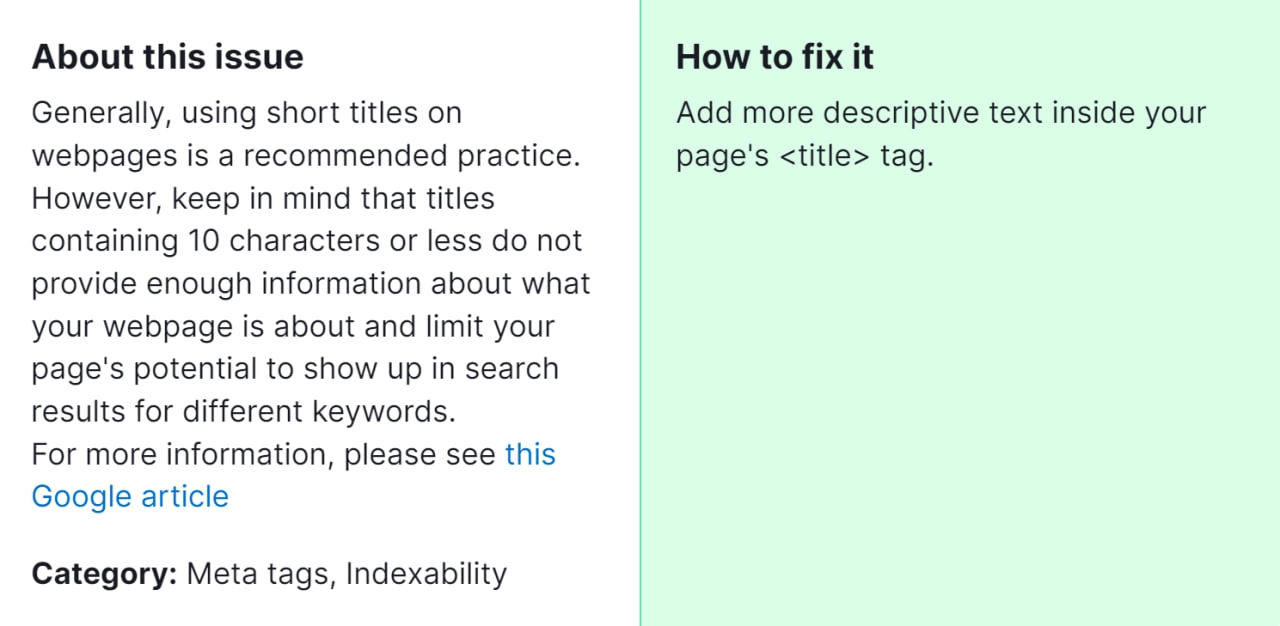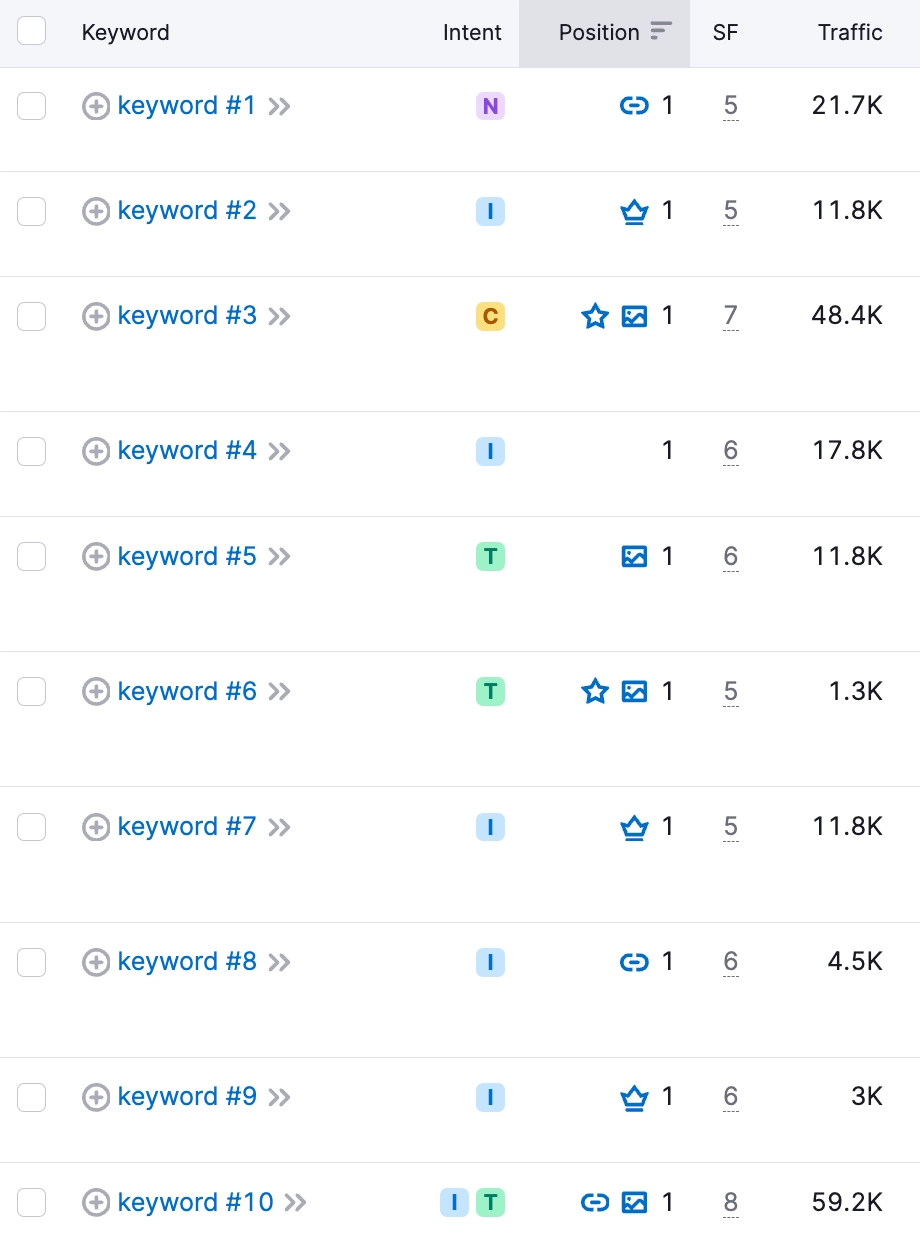When conducting website audits, one common issue that might arise is the lack of sufficient text within the title tags of pages. Title tags are crucial for SEO (Search Engine Optimization) as they provide search engines and users with information about the content of a webpage.

Fixing the issue of insufficient text within title tags is crucial for several reasons:
- SEO Performance: Title tags play a significant role in determining a page’s relevance to search queries. Having descriptive and keyword-rich title tags can improve a page’s visibility in search engine results pages (SERPs).
- User Experience: Clear and informative title tags help users understand the content of a web page before clicking on it. This can lead to higher click-through rates (CTR) and improved user satisfaction.
- Competitive Advantage: Optimized title tags can give your website a competitive edge by attracting more organic traffic compared to competitors with poorly optimized title tags.
How to Fix “Pages Don’t Have Enough Text Within the Title Tags” Detected by a Semrush Audit

Step 1: Identify Affected Pages
- Start by running a website audit using Semrush or similar SEO auditing tools.
- Look for specific warnings or notifications indicating pages with insufficient text within title tags.
Step 2: Review Existing Title Tags
- Access the affected pages on your website.
- Examine the existing title tags to understand their current structure and content.
Step 3: Add Relevant Keywords
- Identify primary keywords relevant to the content of each page.
- Incorporate these keywords naturally into the title tags to accurately reflect the page’s topic and purpose.
Step 4: Optimize Title Length
- Ensure that the title tags are within the recommended length limits (typically 50-60 characters) to avoid truncation in search results.
Step 5: Write Descriptive Titles
- Craft descriptive and compelling titles that accurately summarize the content of each page.
- Steer clear of titles that lack specificity or fail to convey valuable information to users.
Step 6: Avoid Keyword Stuffing
- While it’s important to include relevant keywords, avoid overloading title tags with excessive keywords (keyword stuffing). Such practices can negatively impact both the user experience and your website’s SEO performance.
Step 7: Utilize Branding (if applicable)
- If appropriate, incorporate your brand name into the title tags to enhance brand visibility and recognition in search results.
Step 8: Implement Changes
- Update the title tags of the affected pages with the optimized and descriptive titles.
- Ensure that changes are accurately reflected in the HTML source code of each page.
Step 9: Monitor Performance
- After making the necessary changes, monitor the performance of the updated title tags.
- Track changes in search engine rankings, organic traffic, and click-through rates to assess the effectiveness of your optimizations.
Step 10: Iterate and Refine
- Continuously monitor and refine your title tags based on performance data and evolving SEO best practices.
- Stay informed about algorithm updates and industry trends to adapt your optimization strategies accordingly.
If none of the solutions provided work, feel free to reach out to our team for personalized assistance in resolving this issue. We’re here to help!




